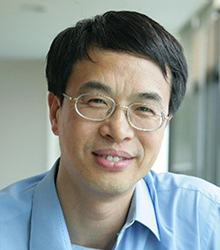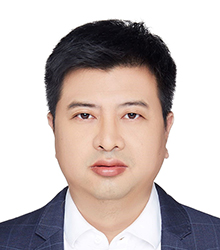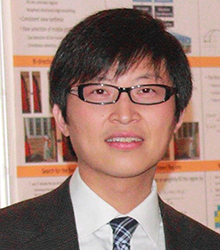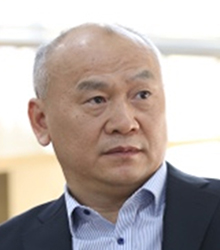TURC-AIS
中国图灵大会人工智能与安全学术会议(ACM TURC-AIS , ACM TURC Conference on Artificial Intelligence and Security)是 ACM 中国图灵大会(ACM TURC)下设的唯一学术分会,由SIGWEB China主办。依托于主会每年举办一届,主要关注计算机前沿技术、人工智能与安全。会议立足国内,面向国际,致力于收录展示度高、代表性强的国内外前沿学术成果。欢迎鼓励国内外专家学者参与、投稿。会议正式录用的文章将在 ACM Digital Library 发表(EI 检索),优秀论文将被推荐到本领域多个知名 SCI 期刊发表;会议短文将在普通国际期刊发表。具有代表性的成果,将安排在中国图灵大会学术分会场进行报告。投稿并注册参加本学术分会的作者,将有机会同时参与中国图灵大会的各项活动。
详情ACM TURC-AIS官网:http://www.turcais.com
We are pleased to announce that the 2nd ACM TURC Conference on Artificial Intelligence and Security (TURC-AIS 2021, http://www.turcais.com) will be held from July 30 – Aug. 1, 2021 at Hefei, China. As the only workshop of the ACM Turing Celebration Conference - China (ACM TURC, ACM中国图灵大会), TURC AIS offers a timely venue for researchers and industry partners to present and discuss their latest results in computer science, artificial intelligence, security and privacy related works.
The organizing committee is excited to invite you to take part in ACM TURC AIS 2021, to discuss issues at the technological frontier of society today as well as interdisciplinary technological trends. The technical program chairs invite the submission of original papers to following symposia for presentation and publication in the conference proceedings (ACM Digital Library). Best paper awards will be selected from accepted papers. Outstanding papers will be invited for possible publication in SCI-indexed journals.
会议日程
| 日期(2021-07-31)地点(会议室9) | ||||
| 时间 | 演讲 | 主持人 | 演讲者 | |
| 14:00 - 14:05 | 开场致辞 | 孙星明,南京信息工程大学教授,TURC-AIS大会主席,SIGWEB中国主席 | ||
| 14:05-14:45 | 特邀报告 1 | 自动图机器学习 | 殷赵霞,安徽大学教授 | 朱文武,清华大学教授 |
| 14:45-15:25 | 特邀报告 2 | 区块链安全监管和隐蔽通信 | 周志立,南京信息工程大学教授 | 祝烈煌,北京理工大学教授 |
| 15:25-15:40 | 茶歇 | |||
| 15:40-16:20 | 特邀报告 3 | 基于信号处理理论的卷积神经网络 | 胡东辉,合肥工业大学教授 | 熊红凯,上海交通大学教授 |
| 16:20-17:00 | 特邀报告 4 | 网络文本的情感认知计算 | 杨春芳,河南省网络空间态势感知重点实验室教授 | 黄永峰,清华大学教授 |
| 17:00-17:30 | ACM SIGWEB China 新星推介 论文交流 |
王保卫,南京信息工程大学教授 | ||

Keynote: 自动图机器学习

朱文武
清华大学计算机系副主任
AAAS Fellow 、 IEEE Fellow、SPIE Fellow
欧洲科学院外籍院士
信息科学与技术国家研究中心副主任
大数据算法与分析国家工程实验室副主任
Abstract: Automated machine learning (AutoML) on graphs, which combines the strength of graph machine learning and AutoML, is gaining attention from the research community. This talk will first overview graph machine learning and AutoML on graphs. Then, recent advances, including efficient neural architecture search for self-attention representation, hyper-parameter optimization on large-scale graphs, and increasing explainability in AutoML on graphs, will be discussed. We will also introduce AutoGL, the first dedicated framework and open-source library for AutoML on graphs, which is expected to facilitate the research and application in the community. Last but not least, our insights on future research directions will be shared with the audience.
BIO: Automated machine learning (AutoML) on graphs, which combines the strength of graph machine learning and AutoML, is gaining attention from the
research community. This talk will first overview graph machine learning and AutoML on graphs. Then, recent advances, including efficient neural architecture
search for self-attention representation, hyper-parameter optimization on large-scale graphs, and increasing explainability in AutoML on graphs, will be
discussed. We will also introduce AutoGL, the first dedicated framework and open-source library for AutoML on graphs, which is expected to facilitate the research
and application in the community. Last but not least, our insights on future research directions will be shared with the audience.
He served as the Editor-in-Chief for the IEEE Transactions on Multimedia (T-MM) from January 1, 2017 to December 31, 2019. He has been serving as the chair of the
steering committee for IEEE T-MM and Vice EiC for IEEE Transactions on Circuits and Systems for Video Technology (TCSVT) since January 1, 2020. He served as
co-Chair for ACM MM 2018 and co-TPC-Chair for ACM MM 2014. His current research interests are in the areas of multimodal big data and intelligence, and multimedia
networking including edge computing. He received nine Best Paper Awards, including ACM MM 2012. He is an IEEE Fellow, AAAS Fellow, and SPIE Fellow.

Keynote: 区块链安全监管和隐蔽通信

祝烈煌
北京理工大学网络空间安全学院党委书记
国家高层次人才特殊支持计划
科技部中青年创新领军人才
教育部新世纪优秀人才
Abstract: The public blockchain, such as Bitcoin, Ethereum, and EOS, is easy to be used for money laundering, ransom payment, dissemination of illegal content, and other criminal activities due to its decentralization and anonymity, which may cause serious harm to financial order and social stability. Thus, it is urgent to study the corresponding supervision methodologies, by the comprehensive analysis of transactions and data flow, the effective realization of network monitoring and transaction traceability of public blockchain. On the other hand, the characteristics of the public blockchain, such as peer-to-peer communication and anonymous identity, are conducive to covert data transmission. The blockchain transactions can be considered as a natural carrier for the construction of covert channels. Also, the blockchain-based covert communication also faces many technical challenges. This report mainly introduces the technical characteristics of the public blockchain, as well as the supervision methodology for the public blockchain and the corresponding covert communication technology.
BIO: Liehuang Zhu, doctor, professor and doctoral supervisor, was selected into the National Special Support Program for High-level Talents. Currently, he is the director of Institute of Advanced Network and Data Security, School of Cyberspace Science and Techonoly, Beijing Institute of Technology. He also serves as secretary-general of the Blockchain Special Committee of the Chinese Computer Society, member of the Cyberspace Security Teaching Steering Committee of the Ministry of Education, and chairman of the Intelligent Information Network Professional Committee of the Chinese Artificial Intelligence Society. He also serves as the editorial board member of IEEE IoT-J, IEEE TVT, IEEE Network and other international journals. In recent years, he has presided over more than 20 national, provincial and ministerial level projects such as key R & D projects of the Ministry of Science and Technology, key projects of the National Natural Science Foundation of China, and key projects of National Defense Basic Scientific Research, published more than 150 high-level academic papers, and won 3 provincial and ministerial level science and technology awards.

Keynote: 基于信号处理理论的卷积神经网络

熊红凯
上海交通大学 特聘教授
国家杰出青年科学基金获得者
教育部新世纪优秀人才
上海市曙光学者
上海市青年科技英才
Abstract: This talk presents a global trajectory of signal processing for analysis and representation emerging within decades. It begins with time-frequency decompositions, wavelet orthogonal bases, multiscale geometric analysis, approximations and sparsity from orthonormal bases to redundant dictionaries of waveforms, compressive sensing and dictionary learning as well. The striking efforts in deep learning would also be addressed for a comprehensive perspective. Our recent works exploring structured sparsity and deep convolutional networks for scalable and compact representation of high-dimensional signals will be described as some examples. By rethinking the cutting-edge signal processing techniques in alignment with interdisciplinary inspirations, it is appealing to make the scientific community move forward and avoid dying by starvation in a progressively narrower and specialized domain. If possible, we might present the trajectory from graph signal processing towards graph neural networks. Specifically, we overview existing graph network methodology and elaborate the underlying theoretical foundation. Furthermore, our relevant theoretical and technical efforts have been provided to inspire possible expectations.
BIO: Hong-Kai XIONG is a Distinguished Professor in both Dept. Electronic Engineering and Dept. Computer Science and Engineering, Shanghai Jiao Tong
University (SJTU). His research interests mainly focus on multimedia signal processing, image and video coding, multimedia communication and networking, computer
vision, biomedical informatics, machine learning. He published over 280 refereed journal and conference papers. Currently, he is the associate editor of IEEE
Transactions on Circuits and Systems for Video Technology (TCSVT).
Since he received his Ph.D. degree from SJTU in 2003, he has been with Department of
Electronic Engineering in SJTU. During 2007-2008, he was a research scholar in the Department of Electrical and Computer Engineering of Carnegie Mellon University
(CMU). From 2011 to 2012, he was a scientist with the Department of Biomedical Informatics at the University of California, San Diego (UCSD). He was the recipient
of the Science and Technology Innovative Leader Talent in Ten Thousand Talents Program in 2017, Yangtze River Scholar Distinguished Professor Award from Ministry
of Education, China in 2016, National Science Fund for Distinguished Young Scholar Award from Natural Science Foundation of China (NSFC) in 2014, Shanghai Youth
Science and Technology Distinguished Achievement Award in 2018, Shanghai Academic Research Leader Talent Award in 2017, Shanghai Youth Science and Technology
Talent Award in 2014, Shanghai Shu Guang Scholar Award in 2013, 2017 Baosteel Excellent Faculty Award, New Century Excellent Talent Award from Ministry of
Education of China in 2009, SJTU SMC-A Excellent Young Faculty Awards in 2013 and 2010. He has been granted 2017 and 2011 First Prizes of the Shanghai Technology
Innovation Award for research achievements on Network-oriented Video Processing and Dissemination.

Keynote:网络文本的情感认知计算

黄永峰
清华大学电子系教授
闽江学者特聘讲座教授
信息认知与智能系统研究所副所长
Abstract: Online social media contains rich emotional information of online users, which has become the best resource for countries and enterprises to understand the emotions and opinions of netizens. Web text sentiment analysis technology has become a research hotspot in many disciplines. At the same time, emotional cognitive computing is also the highest form and frontier subject of artificial intelligence technology. The report will first give the definition of sentiment computing, and then some confusions and thoughts that he has encountered over the years will be discussed. The speaker will focus on analyzing the development trends and challenges in the field of online text sentiment computing, and then propose a binary computing model for fine-grained sentiment analysis-oriented online text sentiment cognition, and introduce the method of fine-grained sentiment analysis based on knowledge guidance. Finally, the speaker will show the application prospects of the binary emotion computing model.
BIO: Huang Yongfeng is a doctor, professor, doctoral supervisor, outstanding teacher of the first national network security, deputy director of the
Institute of Information Cognition and Intelligent Systems, and a special lecture professor in Minjiang. He is also an IEEE Senior Member, Vice Chairman of ACM
SIGWEB China Branch, Vice Chairman of the Artificial Intelligence and Education Committee of the China High-Tech Association, and a member of the China
Information Hiding and Multimedia Security Professional Committee. For many years, he has been engaged in the research and teaching of Internet and its
information security theory and technology. He has taken charge of the key projects and general projects of the National Natural Science Foundation of China,
National Program on Key Basic.
Research Project of China (973 Program), National High-tech R&D Program of China (863 Program), and more than forty
scientific research projects such as key research and development projects. He has served on the editorial board of many internationally renowned journals, as
well as the program committee or chairman of important international conferences.
He has published more than three hundred academic papers in famous
domestic and foreign journals such as Science (Eletters), Nature SR, IEEE Tran. ACM Tran., Science in China, and important international conferences such as AAAI
and ACL (including more than one hundred papers included in SCI). He has published six monographs, two translations, and two textbooks. He has applied for more
than twenty invention patents (eleven of them have been authorized and two technology transfers). He has won two first prizes, three second prizes of provincial
and ministerial scientific and technological achievement awards, one first prize of excellent textbooks, and two teaching achievement awards of Tsinghua
University.
Topics of interest include, but are not limited to:
1.Artificial Intelligence and Security
Machine Learning
Natural Language Processing
Computer Vision
Data Mining
Artificial Neural Networks
Affective Computing
Planning
Knowledge Representation
Reasoning
Robotics and Reception
Big Data Applications
Artificial Intelligence Applications in Science, Engineering, Healthcare and Medicine
2.Big Data and Security
Techniques, Models and Algorithms for Big Data
Tools and Systems for Big Data
Big Data Analytics and Social Media
Hardware/Software Infrastructure for Big Data
Mobile Communications and Networks
Security and Privacy for Big Data
Copyright Protection for Big Data
Data Compression
Machine Learning and AI for Big Data
Big Data Persistence and Preservation
Big Data Quality and Provenance Control Big Data Storage and Retrieval
3.Cloud Computing and Security
Cloud Computing Architecture and Systems
Cloud Computing Models, Simulations, Designs, and Paradigms
Cloud Management and Operations
Dynamic Resource Provision and Consuming
Cloud Computing Technologies, Services and Applications
Security Evaluation and Benchmarks Based on Cloud
Authentication, Authorization and Reliability Issues in Cloud
Security and Privacy in Cloud Computing
4.Information Hiding
Coverless Information Hiding
Steganography and Steganalysis
Digital Watermarking, Fingerprinting and Forensics
Multimedia Authentication and Encryption
Covert/Subliminal Channels
5.IoT Security
Data Security and Privacy in the IoT
Attacks and Countermeasures on IoT Systems
Trust Model, Data Aggregation and Information Sharing
Secure Hardware and Software for IoT
Application Security for IoT
6.Multimedia Forensics
Active and Passive Forensics
Big Data Forensics
Portable electronic device forensics
Network Forensics
Anti-forensics
7.Encryption and Cybersecurity
Measurements for Cybersecurity
Post Quantum Cybersecurity
Visualization for Security
Applied Cryptography
Language-based Security
Organization Committee
General Co-Chairs:
Yun Q. Shi, New Jersey Institute of Technology, USA
Yunbiao Guo, China Information Technology Security Evaluation Center, China
Xingming Sun, Nanjing University of Information Science and Technology, China
Jonathan Wu, University of Windsor, Canada
Technical Program Chairs:
Yongfeng Huang, Tsinghua University, China
Baowei Wang, Nanjing University of Information Science and Technology, China
Victor S. Sheng, University of Central Arkansas, USA
Paper Submission Guidelines
1. All manuscripts should be submitted in PDF file format by the following system:
https://cmt3.research.microsoft.com/TURCAIS2021. (Coming
soon…)
Note: In the SUBJECT AREAS section, the invited authors please select "Invited Paper", others please select "Original Paper".
2. All submissions must be in English. This year we are accepting Full paper and Short Paper submissions. Full papers, must be at least 7 pages in length but no more than 10 pages in double-column ACM format (as specified at ACM Proceedings Template), including figures and references. Short papers, must be 4-6 pages in length, including figures and references. Authors should refer to the conference submission format to prepare their papers. Templates for the standard ACM format can be found at https://www.acm.org/publications/proceedings-template. No changes to margins, spacing, or font sizes are allowed from those specified by the style files. Papers violating the formatting guidelines will be returned without review.
3. The submitted papers must not be previously published anywhere, and must not be submitted to any other conferences before and during the TURC-AIS 2021 review process. Submitting a paper to the conference means that if the paper were accepted, at least one author will register and attend the conference.
4. For any difficulties and other issues regarding submission, please contact: turcais@163.com.
Acceptance
Manuscripts should present the current research in the areas identified in the call for papers. All submitted manuscripts will be reviewed by experts in the fields and will be judged from the aspects of problem significance, contributions, originality, correctness, technical strength, quality of presentation, and relevance to the conference attendees.
Publication
All accepted full papers will be entered into ACM Digital Library and the Engineering Index (EI).
All accepted short papers will be published in other journals.
Outstanding papers will be invited for possible publication in the SCI-indexed journals.
Important Dates
Paper submission: May 20, 2021 22:00 AOE
Notification of acceptance: June 20, 2021
Registration due: June 28, 2021
Camera-ready: June 30, 2021
Conference date: July 30 – August 1, 2021
Contact US
ACM TURC Conference on Artificial Intelligence and Security
URL: http://www.turcais.com
e-mail: turcais@163.com
TURC AIS WeChat Official Accounts:


